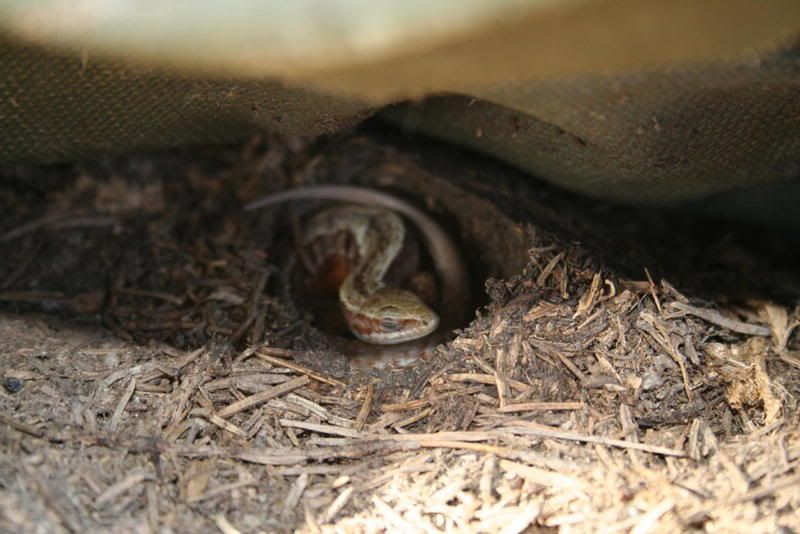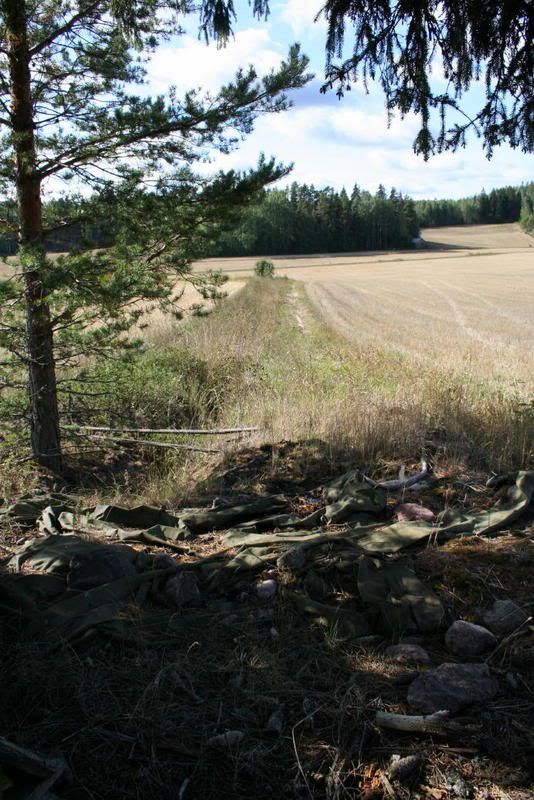 |
 |
Hibernation time..: |
| Author | Message |
|
Timo Member Joined: 20 Nov 2005 No. of posts: 13 View other posts by Timo |
Posted: 12 Sep 2006 Hello, Finding first Lacerta vivipara which are trying settle down for winter in this autumn. Place is very easy for later examination and we are trying solve their hibernation. I'm not sure yet is that final place during winter but it has been staying in here a many days and temperature has been cold and rainy, so we'll see. Still, yesterday was much warmer day but it doesn't move to bask or feed.   Timo Paasikunnas |
|
Aodan123 Member Joined: 23 Jan 2006 No. of posts: 6 View other posts by Aodan123 |
Posted: 16 Sep 2006 Do the babies stay out longer before going into hibernation than the adults? When is the latest in the year that people have seen them? |
|
armata Forum Specialist Joined: 05 Apr 2006 No. of posts: 928 View other posts by armata |
Posted: 16 Sep 2006 Good hibernacula in Dorset (and elswhere I guess) is molinia tussocks - this means they are above ground. Also good for neo sand lizards, adders, and smooth snakes. Should remember this when burning in winter  'I get my kicks on Route 62' |
|
herpetologic2 Senior Member Joined: 15 Jun 2004 No. of posts: 1369 View other posts by herpetologic2 |
Posted: 16 Sep 2006
Not to mention anthills which I have found lizards within during November - up to 7 lizards 3 adult females and 4 juveniles this was after 740 animals were collected from a small site dotted with anthills - the anthills were the last refuge left for a destructive search - so we took apart 80 or so anthills thus found the 7 lizards within ant chambers - which are not used by the ants during the autumn or winter they are found much deeper down in the ground Jon Vice Chair of ARG UK - self employed consultant - visit ARG UK & Alresford Wildlife |
|
mikebrown Senior Member Joined: 30 Jun 2005 No. of posts: 95 View other posts by mikebrown |
Posted: 26 Nov 2006 Its November 26th, a nice sunny day, and three juvenile Common Lizards still active on the Merseyside dunes. Shows its still worth looking. Mike Brown Mike Brown Merseyside ARG |
|
james4 Senior Member Joined: 13 Nov 2006 No. of posts: 466  View other posts by james4 |
Posted: 06 Dec 2006 are there common l. on merseyside dunes,were about. http://ukreptiles.proboards55.com |
|
Ray999 Senior Member Joined: 07 Mar 2006 No. of posts: 101 View other posts by Ray999 |
Posted: 07 Dec 2006 What effect does this spell of mild weather we are having have on our native herps.I would imagine they arn,t in deep hibernation yet so are probably more active than they might normally be. Does this use up more of their reserves so causing a problem later in the winter?. Do they have to be above a certain temp before they can digest their food like other reptiles?. Any thoughts Ray ray999 |
|
james4 Senior Member Joined: 13 Nov 2006 No. of posts: 466  View other posts by james4 |
Posted: 07 Dec 2006 are therecl on meryside dunes,were about. http://ukreptiles.proboards55.com |
|
arvensis Senior Member Joined: 15 Mar 2006 No. of posts: 445 View other posts by arvensis |
Posted: 08 Dec 2006 James, As has been mentioned before elsewhere on the forums, exact locations are unlikely to be revealed for species protection. Mark Hampshire Amphibian and Reptile Group. |
|
GemmaJF Admin Group Joined: 25 Jan 2003 No. of posts: 2090 View other posts by GemmaJF |
Posted: 08 Dec 2006 James common lizards have a huge distribution across the UK and can be found in many many places. You need to learn where the right places are so that you can look for yourself. Here are some tips. You can find common lizards in grassland, heaths, along sea defences , hedges and even in my back garden. They will bask on logs, fence posts and particularly old tyres that have been left lying about. To spot them walk slowly with the sun to your back. Walk towards areas where the sun reaches the ground and the features mentioned above are present. Approach very quietly and look well ahead. Try this in the spring when you get a chance. Some of the best sites will be old industrial sites (also known as brownfield). Railway lines, you may have dissused railway lines near you that are now walks open to the public, sunny verges of these are ideal. Seawalls or coastal paths. Again look at banks and verges and keep a special lookout for old tyres catching the sun, logs and fence posts. Hope that helps. Gemma Fairchild, Independent Ecological Consultant |
|
james4 Senior Member Joined: 13 Nov 2006 No. of posts: 466  View other posts by james4 |
Posted: 08 Dec 2006 i have a woods near me but only newsts there,but amphibians did go there,no im not going to go to the dunes and cacth them i want to go to see were they are just to look. thanks for the tips.i think looking at pics of them there very hard to see.will they be around were snakes are? http://ukreptiles.proboards55.com |
|
arvensis Senior Member Joined: 15 Mar 2006 No. of posts: 445 View other posts by arvensis |
Posted: 08 Dec 2006 Maybe, maybe not, it all depends on the area and if snakes occur there - which is why it is important to look at the areas yourself. Hampshire Amphibian and Reptile Group. |
|
james4 Senior Member Joined: 13 Nov 2006 No. of posts: 466  View other posts by james4 |
Posted: 08 Dec 2006 ok ill do so. http://ukreptiles.proboards55.com |
|
GemmaJF Admin Group Joined: 25 Jan 2003 No. of posts: 2090 View other posts by GemmaJF |
Posted: 08 Dec 2006 If you get lucky James you might find places with adders, grass snakes, slow-worms and common lizards all together, but as arvensis said really you must start to look yourself, then YOU will know where to find them. Last year a land manager thought he would be clever and 'withhold' the location of adder hibernation areas at a wildlife reserve.. I had located 4 of the hibernation areas and recorded plenty of adders two hours later.. I could do this because of experience. I spent many many hours looking without seeing when I was young, until eventually I started to find reptiles. I believe this is the only way to get the feel of where the animals will be. Don't believe it either if people tell you there is nothing there.. if they don't know how to look how do they know for sure? Gemma Fairchild, Independent Ecological Consultant |
|
james4 Senior Member Joined: 13 Nov 2006 No. of posts: 466  View other posts by james4 |
Posted: 09 Dec 2006 ok,so you just look ahead,and wait around incase anything pops out. http://ukreptiles.proboards55.com |
- Hibernation time.. |